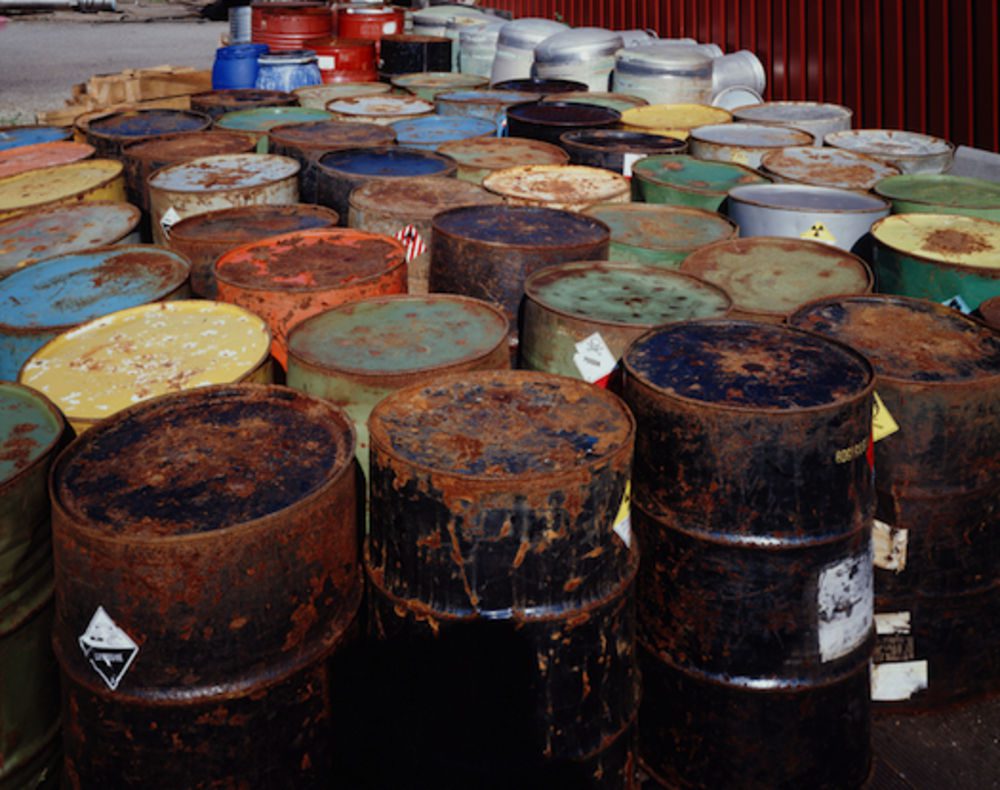
For any business, industry or institution that produces hazardous waste, your hazardous waste generator status will be determined by the amount of waste you may accumulate at your facility or site at one time. Because all companies and institutions produce waste in one form or another, the first step in determining your status as a hazardous waste generator is to identify if the wastes generated at your facility are hazardous.
Hazardous Waste Generator Status: What Is It?
If you are unsure about the properties of the waste your facility is producing, the identification and listings of hazardous waste in full can be found in Part 261 of Title 40 of the Code of Federal Regulations (CFR).
Suffice it to say, if any of the wastes generated at your site are on that list and defined as hazardous, then your facility is a hazardous waste generator and a status must be designated.
Cradle to Grave Hazardous Waste
A company’s or institution’s designation as a hazardous waste generator, and its subsequent status, is part of a broader effort by the EPA to regulate all hazardous wastes from cradle to grave. From its initial generation and storage onsite, to how it is transported offsite to a licensed facility where it can be treated, permanently stored, or disposed of, all hazardous waste is monitored and regulated every phase of its life cycle. This ensures that the health of people and communities is protected and that harmful environmental risks are reduced and eliminated.
The law also established a framework for generators to identify types of wastes and, once identified, to create a waste profile. There are lists of hazardous waste resulting from specific manufacturing or industrial processes, such as solvents, wastewater treatment sludge, or dioxin-bearing wastes. There are source-specific wastes listed too, like those generated from pesticide manufacturing or petroleum refining. Waste may also be classified as hazardous if it holds one of the following four characteristics—ignitability, corrosivity, reactivity, and toxicity.
Once waste has been determined, a waste profile that describes a specific waste, its hazards, the process that generates it, and the specific EPA waste code that applies must be completed. The profile further provides the information to safely handle, store, dispose or treat the waste and comply with applicable regulations. Thus, an accurate waste profile is contingent on the accuracy of the hazardous waste identification and determination.
Keep in mind that your specific generator status is determined not at the company level but at the facility level. The EPA recognizes that a single company may have multiple locations and that only some of them may generate hazardous waste. Though the hazardous waste generator status is related to a particular place, the size of that business or facility does not matter. What is regulated is based on the amount of hazardous waste produced at a site in a calendar month. It’s quite possible a research lab may generate more hazardous waste per month than a manufacturing facility.
Hazardous Generator Categories
Given that the generators of hazardous waste produce different quantities each month, EPA established three categories of generators that are regulated by volume. These are: 1) Very Small Quantity Generators (VSQG), sites that generate 100 kilograms or less per month of hazardous waste or 1 kilogram or less per month of acutely hazardous waste, and 2) Small Quantity Generators (SQG) that generate more than 100 kilograms, but less than 1,000 kilograms of hazardous waste per month, and 3) Large Quantity Generators (LQG) that generate 1,000 kilograms per month or more of hazardous waste, or more than 1 kilogram per month of acutely hazardous waste.
The total volume of hazardous waste generated in a calendar month determines the hazardous waste generator status and what regulations apply to that generator. Keep in mind that all generators of hazardous waste are responsible for accurately determining their generator status—whether they are VSQG, SQG, or LQG—to be in regulatory compliance. Any facility that generates any hazardous waste is responsible for it from the time it is generated until it is properly disposed of.
Contact the Hazardous Waste Experts at MLI Environmental
If you are unsure of your hazardous waste generator status, what it means, or have questions on hazardous waste in general, contact the professionals at MLI Environmental, relieving the environment of hazardous wastes since 2003.
